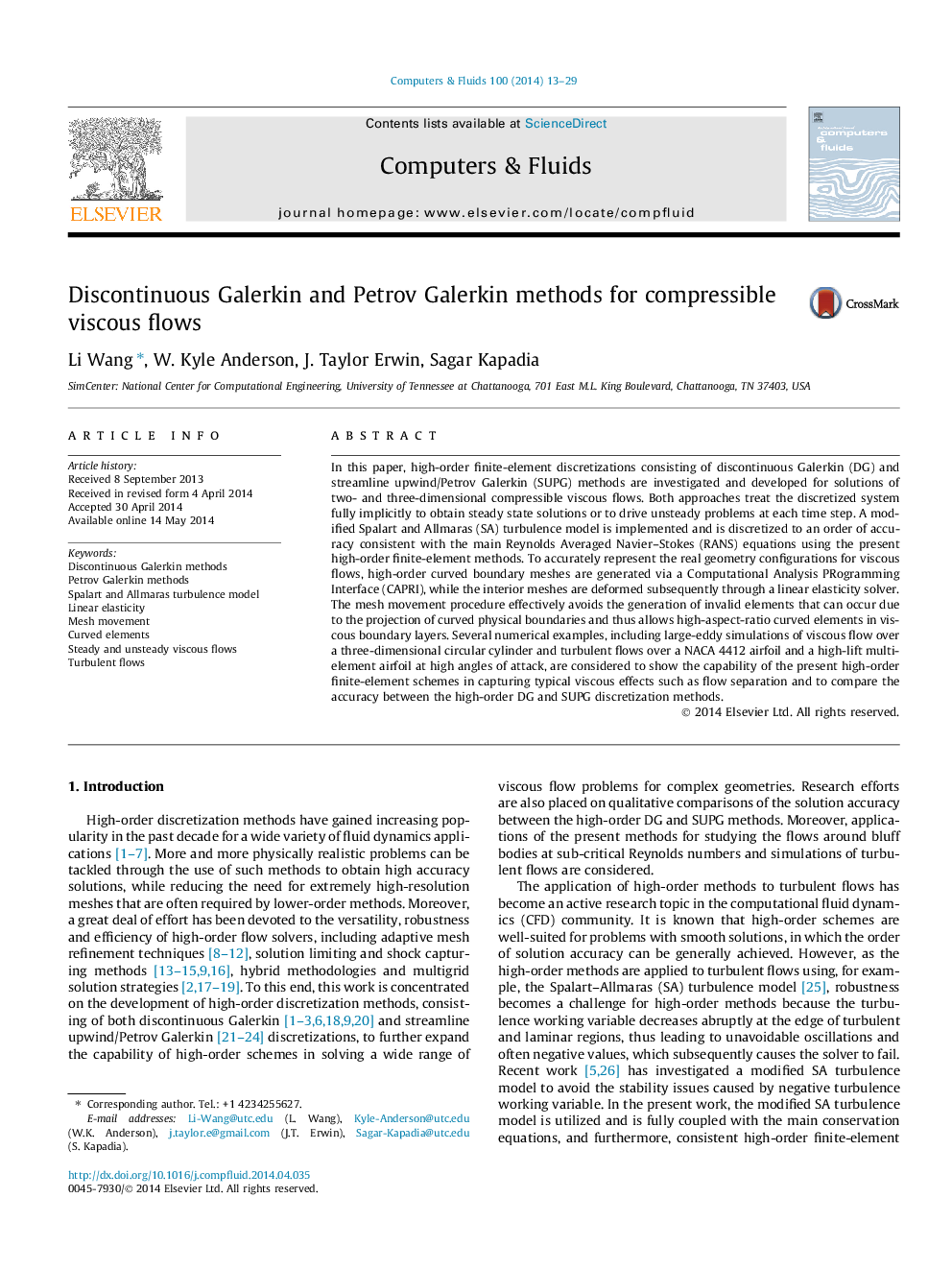| کد مقاله | کد نشریه | سال انتشار | مقاله انگلیسی | نسخه تمام متن |
|---|---|---|---|---|
| 761948 | 1462710 | 2014 | 17 صفحه PDF | دانلود رایگان |
• Discontinuous Galerkin and Petrov Galerkin methods are investigated and developed for laminar and turbulent flows.
• Curved surface mesh is generated using a CAPRI mesh parameterization tool for higher-order surface representations.
• Interior mesh is deformed via a linear elasticity strategy to obtain valid high-order finite element meshes.
• Accuracy is assessed between the discontinuous Galerkin and Petrov Galerkin discretization methods.
In this paper, high-order finite-element discretizations consisting of discontinuous Galerkin (DG) and streamline upwind/Petrov Galerkin (SUPG) methods are investigated and developed for solutions of two- and three-dimensional compressible viscous flows. Both approaches treat the discretized system fully implicitly to obtain steady state solutions or to drive unsteady problems at each time step. A modified Spalart and Allmaras (SA) turbulence model is implemented and is discretized to an order of accuracy consistent with the main Reynolds Averaged Navier–Stokes (RANS) equations using the present high-order finite-element methods. To accurately represent the real geometry configurations for viscous flows, high-order curved boundary meshes are generated via a Computational Analysis PRogramming Interface (CAPRI), while the interior meshes are deformed subsequently through a linear elasticity solver. The mesh movement procedure effectively avoids the generation of invalid elements that can occur due to the projection of curved physical boundaries and thus allows high-aspect-ratio curved elements in viscous boundary layers. Several numerical examples, including large-eddy simulations of viscous flow over a three-dimensional circular cylinder and turbulent flows over a NACA 4412 airfoil and a high-lift multi-element airfoil at high angles of attack, are considered to show the capability of the present high-order finite-element schemes in capturing typical viscous effects such as flow separation and to compare the accuracy between the high-order DG and SUPG discretization methods.
Journal: Computers & Fluids - Volume 100, 1 September 2014, Pages 13–29
